The world has changed, and it’s never going back. The old-school model of owning brick and mortar stores where people come in and buy your products still works, but might not meet the needs of all your potential customers.
Brick and mortar businesses that want to grow, expand, and maximize their revenue need to sell online as well as in person. If you’re ready to expand your business and reach more customers, we’re going to show you how to sell products online.
Whether you have an actual store, or are a service-based operation that still relies on offline sources to attract and engage customers, selling online will greatly expand your ability to make more sales from your target audience and maintain a profitable business.
The pros of selling online for an existing business
↑ Back to topIn fact, there are several advantages to selling online for businesses that have already established themselves. Let’s look at a few:
The ability to reach new audiences
Without an online store, you can only sell products to people within your local area. But once you learn how to sell online, you can sell to buyers across the country. And if you put the right practices in place, you can sell online across the world.
If your products sell well in person, there’s rarely a reason that they won’t sell to online shoppers. The main difference with selling online is that those potential customers have to be able to find you. We’ll talk about that in a moment.
But even in your local area, there are probably whole segments of customers who don’t know you exist, but would buy your products or services. If you’re not selling online, anyone searching online for the product or service they want isn’t going to be able to buy from you easily.
Improved customer service
A tenet of marketing is to make it easy for people to engage with your company in the way they most prefer. Today, some people simply prefer shopping online. So if you’re not selling online, you won’t reach those customers.
But beyond that, what if someone wants to buy something you sell, but it’s 9pm and you’re closed? If you sell online, they can place the order right then, and either get it shipped to their door or come pick it up in-store the next day.
Selling online enables customers to engage with you at their convenience. They can shop when they want, pay how they want, and retrieve items how they want.
Low cost expansion
What will be an easier source of new revenue? Opening a new location or learning how to sell online?
New locations entail all sorts of costs: rent, permits, employees, utilities, displays, shelving, signage, and more. Expanding locations is a high-cost business model, on the front end. And it’s a smart move if you’re prepared for it.
But expanding your business online requires a much smaller set of costs. The bar is much lower, and you don’t have to hassle with managing a second location. Plus, if you can reach customers across a wider geographic area, your sales potential is much greater.
Less risk
Once you open a new storefront, you’ve invested quite a lot into it, and you can’t just back out if things don’t go well. Plus, you’re at the mercy of landlords, road construction, shifting traffic patterns, impediments to foot traffic, parking, etc.
When you sell online, it’s easier to pivot and adjust your approach if something doesn’t work out quite like you’d hoped.
The ability to avoid having any physical locations, if desired
You can also go full ecommerce and disband your physical store altogether. If you run a service business, you can manage everything remotely.
For example, lawn care businesses, roofers, floor installers, handymen, plumbers, cleaners, and many other service-based businesses don’t usually need a physical storefront. When you sell online, you can connect with customers and make all your sales there.
How to sell online as an existing business
↑ Back to topLet’s walk through the basic process of taking an existing business model and expanding it to sell online.
Research your audience and products/services
The best online business to start is about more than following your passion. You need an interested target market or you’ll have no customers.
You can start to figure this out by asking a few questions. Are your existing customers underserved by having only a physical store they can visit? How else can you meet their needs by offering them an online store? Do you have customers who would shop more often if you had an online option?
Answering these questions will give you an idea of the potential revenue boost that you can gain from opening your own ecommerce business.
Find out which of your products or services are most in demand. Why are those popular? What needs are they meeting?
Look at your customer reviews and see what people like best about your service and products. Conduct surveys to find out what your customers like, what they need, how they prefer to shop, and more. You can even pitch new product ideas to your existing customers and make those products available for sale online exclusively, at first. And consider sitting down and writing an online business plan to outline all of your strategies and goals.
The idea with all of this is to get a sense of the demand, and see if you can meet it by selling online.
Decide where to sell online
You have three general options for where to start selling online. You can sell on a pre-existing online marketplace, your own ecommerce store, or through your social media channels. Here’s a quick look at each:
Online marketplaces
Selling on Amazon, Etsy, eBay, and other sites that offer pre-existing online platforms allow you to get started quickly. For many people, these work well to start selling online because you can engage at a very low level and access an established audience.
Your own ecommerce website
This option offers you the greatest opportunity if you’re looking at long-term growth and selling products online as part of your own online business.
With your own store, you have complete control over pricing, how you display your products, how you choose to market your store, and so much more. You can set up pages how you like, connect easily with other tools for marketing, ecommerce accounting, etc., and create content to attract your ideal customers.
It’s your store.
Online marketplaces take a cut of your profits, and you don’t get a say in what that percentage is. They also have control over how much — or how little — your products and store are featured and recommended to their site visitors. They can even shut down your store entirely if they decide you’re in violation of their terms.
With your own online business, you set your policies, and no one can tell you how to sell online.
The best tool to use for selling online is WooCommerce, the powerful and flexible open source ecommerce solution for WordPress.
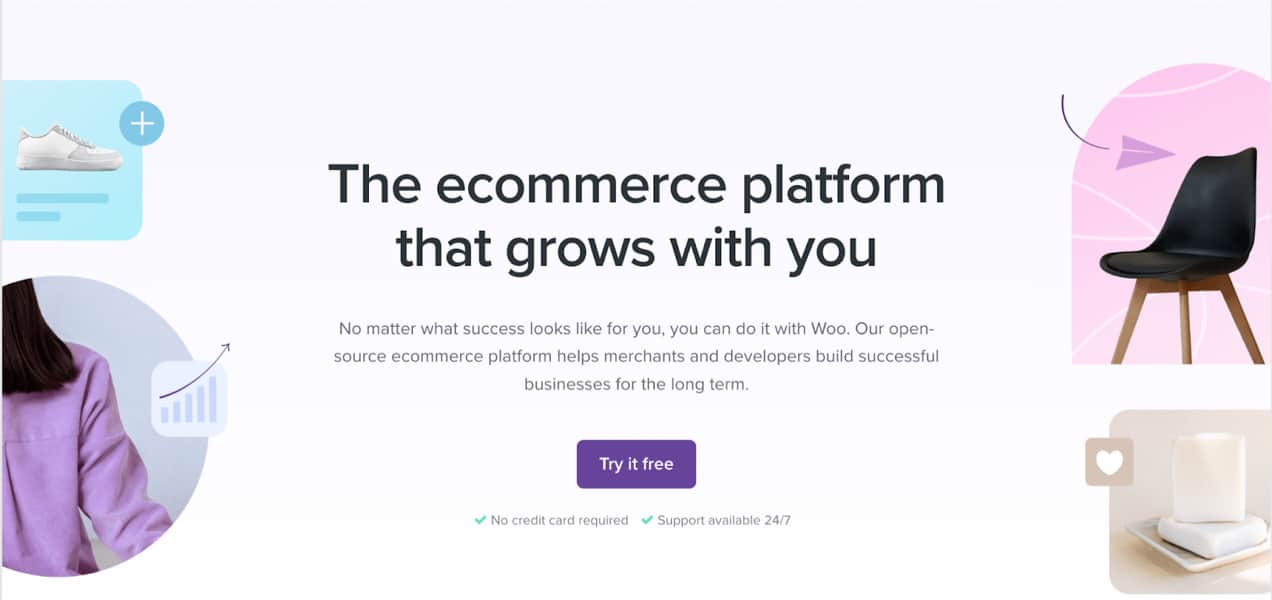
Here are just a few reasons that WooCommerce is the best choice for online stores:
- It’s open-source. Since WordPress and WooCommerce are open-source tools, you maintain full control and ownership over every piece of your online store, from your content to your products.
- It’s easy to use. Thanks to the WordPress block editor, you can build everything from pages and blog posts to site templates by dragging and dropping elements into place. There’s no need to work with code!
- It’s flexible. The possibilities are endless with WooCommerce. Sell anything you’d like and design any website you can imagine. Create very specific shipping rules. Sell subscriptions, memberships, or bookings. Make it easy for customers to personalize your products. Thanks to a large library full of vetted extensions and ecommerce tools, you can add any functionality to your store. Still don’t see a tool that you need? Choose from reputable developers who can customize a solution for you.
- You can integrate with powerful tools. Connect to accounting software, marketing tools, social media platforms, inventory management solutions, CRM tools, and more with ready-made extensions. And if there’s not an existing solution, developers can take advantage of the powerful WordPress REST API to create one for you.
- It grows with you. WooCommerce is built to scale, with code designed for growth. You can choose any host you’d like — a critical component in successfully handling large volumes of traffic — list an unlimited number of products and variations, and incorporate powerful upgrades. Want to sell internationally? Connect to international payment gateways and shipping providers, accept payments in multiple currencies, and translate your site into several languages. Plus, you can use it as a B2B ecommerce platform, a B2C online store, or anything else you’d like.
- You’ll gain access to a powerful community. The WordPress and WooCommerce communities are full of developers and online store owners who want to help one another succeed. You can connect with and learn how to sell online from others through Facebook groups, forums, Slack channels, and even in-person meetups.
Learn more about WooCommerce vs. other options for selling online.
Social media selling
This is harder to make work because it’s not the main purpose of social media, from a user perspective. But there are good options for social commerce, such as Facebook Marketplace, which functions much like the major online marketplaces and comes with most of the same advantages and drawbacks.
It’s easier to set up in some ways, but you have much less control over how you run your online business.
Just note that social commerce is different than social selling — the art of using social media to attract and nurture potential customers through social channels. You’ll need to work on this skill regardless of the platform you ultimately use to process transactions.
You may also be wondering, why can’t I just sell online everywhere? Well, you can.
Using social media or an online marketplace in addition to your own ecommerce store has several advantages. You get the benefit of the pre-existing marketplace and the audience it already commands. But you also get the freedom and long-term growth that come from your successful business on its own platform.
Online marketplaces are good ways to gauge audience response to your products. You can more easily get reviews and recommendations, and adjust based on how people react. In other words, you can treat these platforms as a sort of test audience for selling products online, and then apply what you learn to your own ecommerce website.
Eventually, as your online business grows, you can wean yourself from the third-party sites.
So if you’re looking to sell online to grow your existing online business model, you have several ways to test the waters. Just keep in mind, the more platforms you attempt to use, the more time it will take to start selling products online.
You can also sell at physical locations and sync your store data as seamlessly as linking to another online marketplace. This is known as omnichannel ecommerce.
Need technical help for your business? Hire one of our certified WooExpert agencies to help build, manage, and customize your website. Choose an agency from our WooExpert Marketplace, or reach out to our team for a recommendation based on your requirements.
Decide your geographical target
For businesses selling perishable goods, shipping is a major consideration. In that case, you may only sell products online locally. Or, if you can invest in the packaging required to ship these products, you could expand regionally or to an even larger area.
Other businesses may also want to start locally, focusing on bringing more people to their physical stores by selling online and offering in-store pickup. But eventually, you might expand your target audience and sell across the nation, or even internationally.
Some of this has to do with your target market. For example, if you want to sell beachwear online, it makes sense to target the coastal regions at first, where you’ll find a higher concentration of prospective customers.
With online marketing and search engine optimization (SEO), you can target your marketing to particular locations and regions.
And you can fairly quickly customize ads and landing pages based on markets. For example, suppose your business is located in South Carolina, but you want to sell beachwear to people in Florida. That’s part of your target market. Pick a city like West Palm Beach, and create a page titled ‘Beachwear for West Palm Beach.’
Even though your actual business isn’t there, that doesn’t matter, because you can work to attract traffic from people who are, and you can ship to them. You could then create pages and marketing for other cities and expand your reach further.
Prepare the content for your online store
Online stores need to come as close as possible to replicating the in-store customer experience. Online shoppers need to see your products, interact with them, and find the information they need.
Product photos
This begins with taking high-quality photos of your products. And once you have photos, you need to prepare them for your online store. That means editing, sizing, compressing, and formatting to provide the best possible user experience. Here’s a guide for optimizing product photos.
Inventory
Next, assess your inventory and have systems in place for managing stock and setting items aside once they’ve been ordered online. You should sell products to a customer in person if someone else already ordered them online. Plus, knowing your inventory allows you to keep shoppers updated if a product is running low or is out of stock.
Product descriptions
After that, you’ll want to write product descriptions for all the items you plan to sell online. This is one reason to start small by choosing your most popular products first. If you have 500 products, you don’t necessarily need to write product descriptions for all of them before launching your ecommerce business.
Writing good product descriptions takes time. This is sales copy, not just informational text. Your descriptions need to speak to the customer’s needs and wants. Here’s how to write effective product descriptions.
Positioning and differentiation
For most any industry, it’s a crowded marketplace. You have competition, and that applies to your products and your brand. Some people buy from brands, whatever products they sell, because they like the company. Other people buy products, and they don’t care which company sells them.
You have reasons for selecting the products that you sell. What makes those products better than the ones you don’t sell? Or, if you’re manufacturing them yourself, how can you differentiate yours from all the others out there?
If you’re delivering a service, what sets yours apart from the rest? What do you offer, or do better, or deliver faster than other companies in your niche?
Differentiation isn’t easy, but you have to look for any edge that will enable you to sell more effectively, and then infuse that across your ecommerce website, from the homepage to the product pages to the checkout and thank you pages.
Choose and purchase a domain name
Your domain name is like the address of your physical location — it tells people where they can find you. You’ll be using it a lot once you learn how to sell online. Ideally, you can simply make your domain name the same as your physical store or pre-existing business name.
But it’s possible that the domain is taken or only available for an exorbitant price. In that case, you’ll need to look for a different domain name. Here’s what to take into consideration:
Domain length
You don’t want your URL to be too long. You want your URL to be easy to remember, and easy to fit on business cards and other marketing assets.
Simplicity
Likewise, you want your domain name to be easy to spell, and easy to write down. You might have named your business something creative that’s misspelled on purpose, but that isn’t usually a good idea for a URL.
Take your time with this step, it’s an important choice. We even wrote an entire guide on how to choose a domain name for your own website.
Build your online store
Now, it’s time to build your store! And thanks to WooCommerce, you’ll have everything you need to get up and running.
Choose a hosting provider
A host stores your website files and makes them available for site visitors when they type in your URL. It’s the foundation for your own online store, so it’s important to choose a quality provider. Here are some features to consider:
- Security. Look for a host that includes features like automatic backups, SSL certificates, malware scanning, and server firewalls.
- Performance. Make sure that the provider you choose prioritizes speed. You may want to choose one with tools like content delivery networks (CDNs) and caching. Keep in mind that shared hosting plans, which store a bunch of sites on each server, are going to be cheaper, but slower than VPS or dedicated hosting.
- Additional functionality. Are you looking for specific tools like staging websites or automatic backups? Keep those in mind when making your selection.
- Pricing. Find a plan that fits into your budget, while still having the features and resources that you need.
- Scalability. As you grow, your host should be able to keep up with you. Choose a provider with multiple types of plans, which make it easy to transition as you need more resources and support.
- Support. Look for a host that offers support in a way that’s best for you — email, phone, live chat, etc.
If you’re not quite sure where to start, check out our list of recommended hosts.
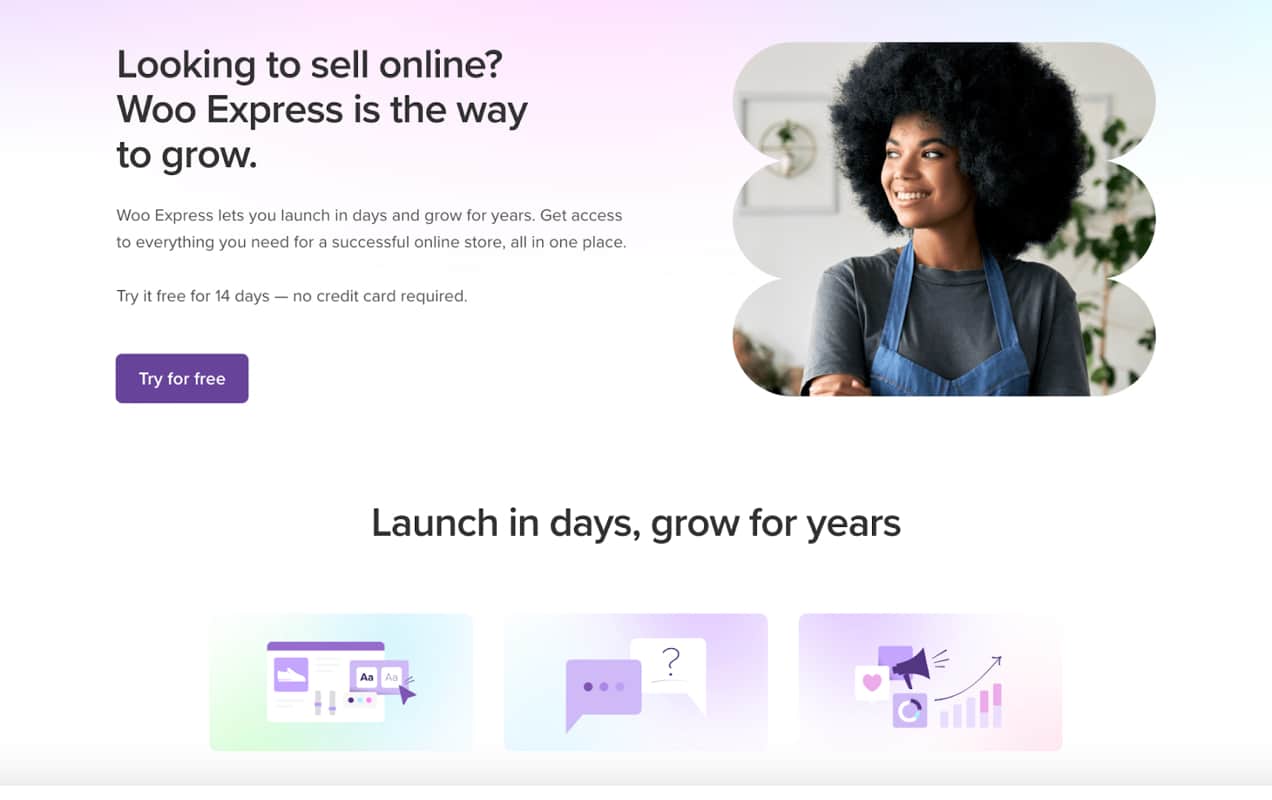
Learn more about choosing a WooCommerce host.
Install WordPress and WooCommerce
Most hosting providers offer one-click WordPress installations, which make it easy to get started. Once you’ve installed WordPress, all you need to do is log into your dashboard with the account credentials that you created, then go to Plugins → Add New. Search for “WooCommerce” and click Install now → Activate.
WooCommerce will open an easy-to-use setup wizard that walks you through the basics of getting started, including some of the steps we’ll go into momentarily.
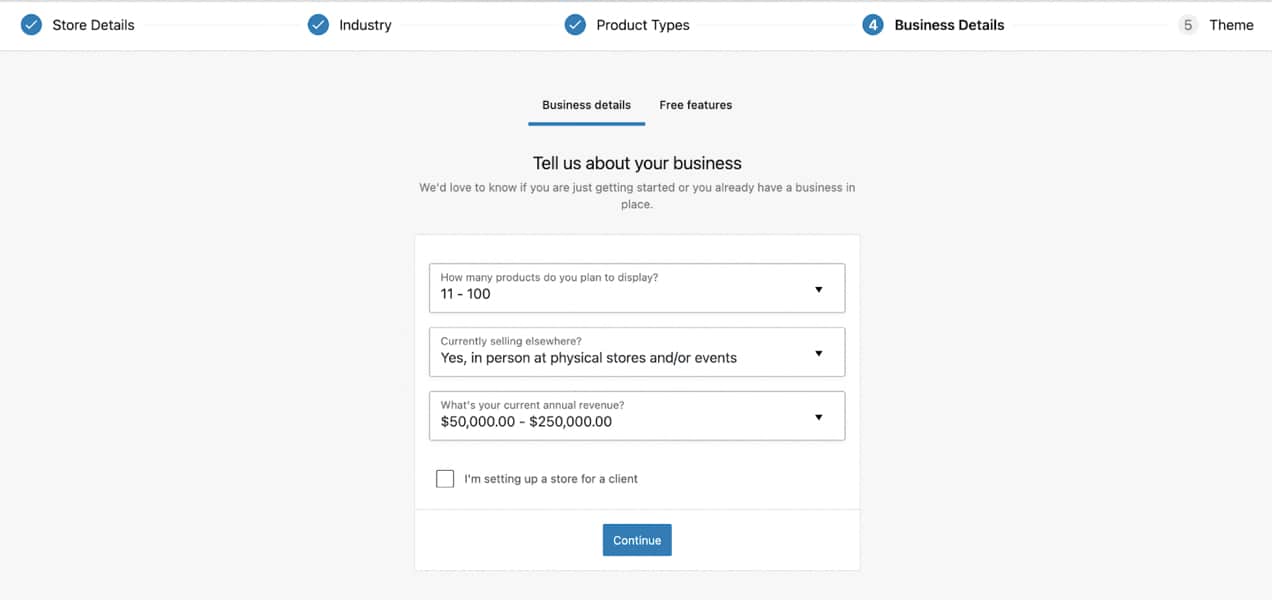
Choose a theme
The WordPress theme that you choose impacts the design and layout of your website. Some act as blank slates, while others include templates that you can just plug your content into and run with.
You can find WooCommerce-compatible website themes from the WooCommerce store, in the WordPress.org repository, and from third-party developers.

Before selecting your WordPress theme, read through the reviews to see what people are saying, confirm that it’s coming from a reputable source, and make sure that developers update it regularly. If there’s a live demo available, test it to ensure that it has the design and functionality that you’re looking for.
Learn more about choosing a WordPress theme.
Create your pages
Now it’s time to create the pages for your very own online store. The exact pages that you need will depend on your site, products, and customers. But most ecommerce stores will want a homepage, About page, Contact page, and FAQ page at a minimum. That, of course, is in addition to pages like Cart and Checkout, which are set up automatically with WooCommerce.
The WordPress block editor simplifies the page creation and design process, and allows you to create something beautiful without needing to edit a single line of code. Each element — paragraph, heading, image, video, etc. — is called a “block.” You can drag a block wherever you’d like on a page, then edit style and functionality settings for each one.
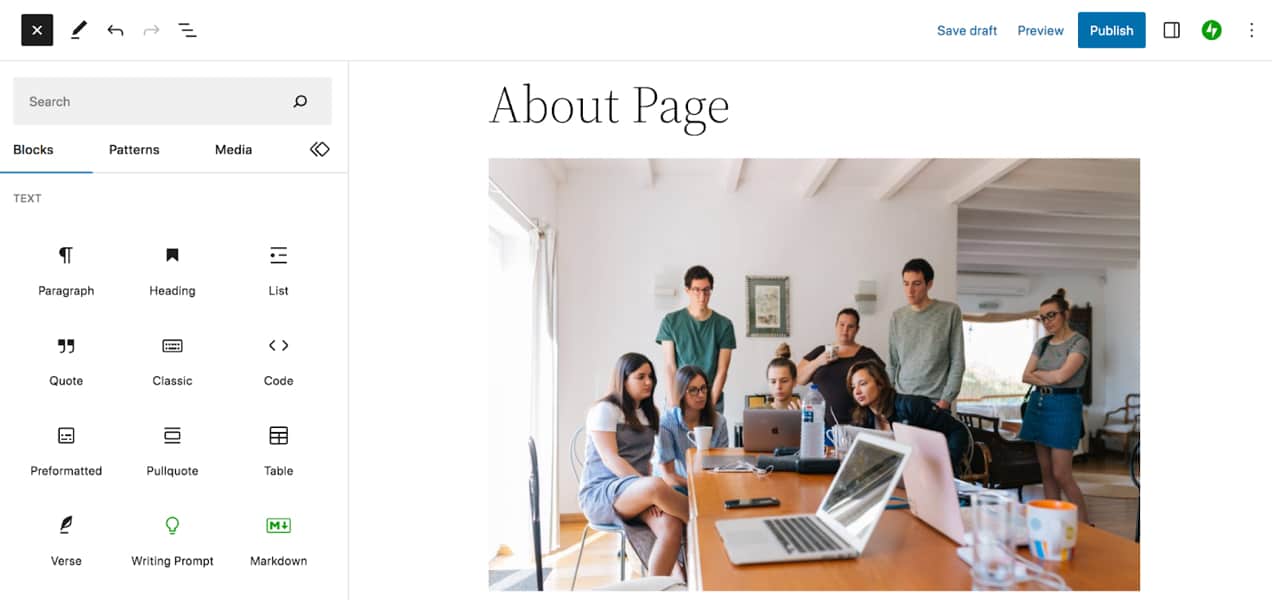
There are also block patterns, which are pre-designed groups of blocks that make building a page even faster. For example, you could add a three-column product row to automatically pull in items in a beautiful way.
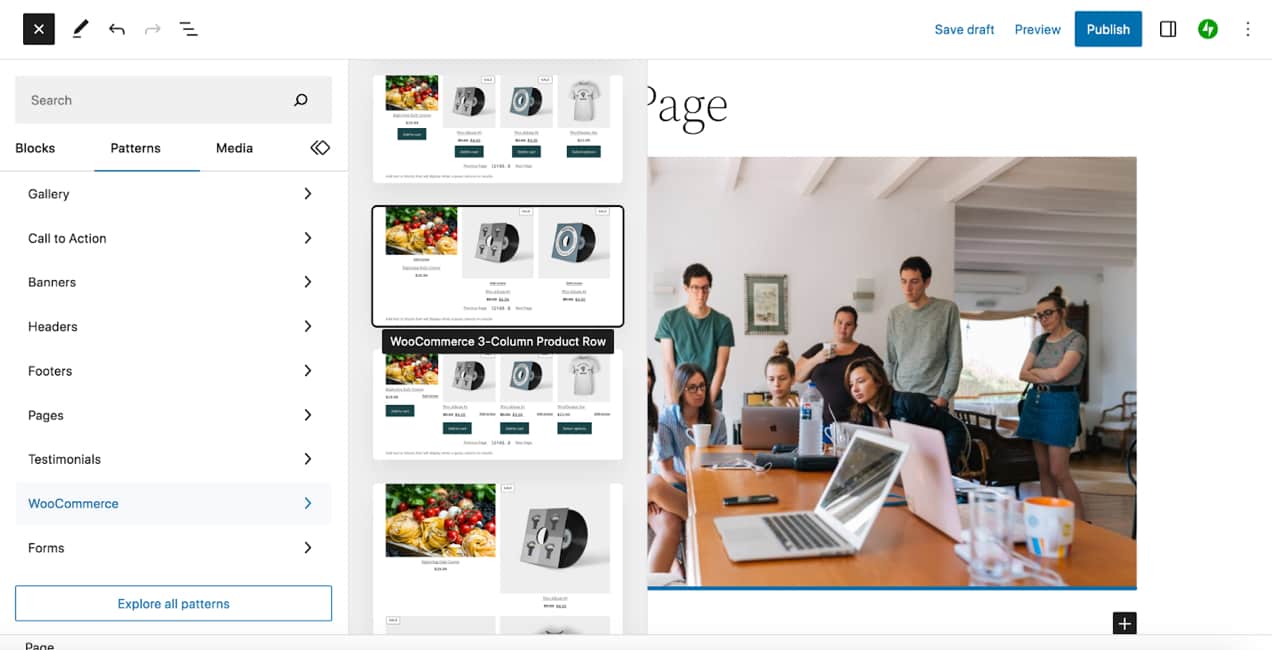
Get all the info in this guide to the WordPress block editor.
Create products
Next, add your products to your store. The WooCommerce product page is pretty straightforward. Navigate to your WordPress dashboard, then click on Product → Add New.
Here, you’ll see fields for the product title, description (which shows up underneath primary product info), and short description (which appears at the top of the product page).
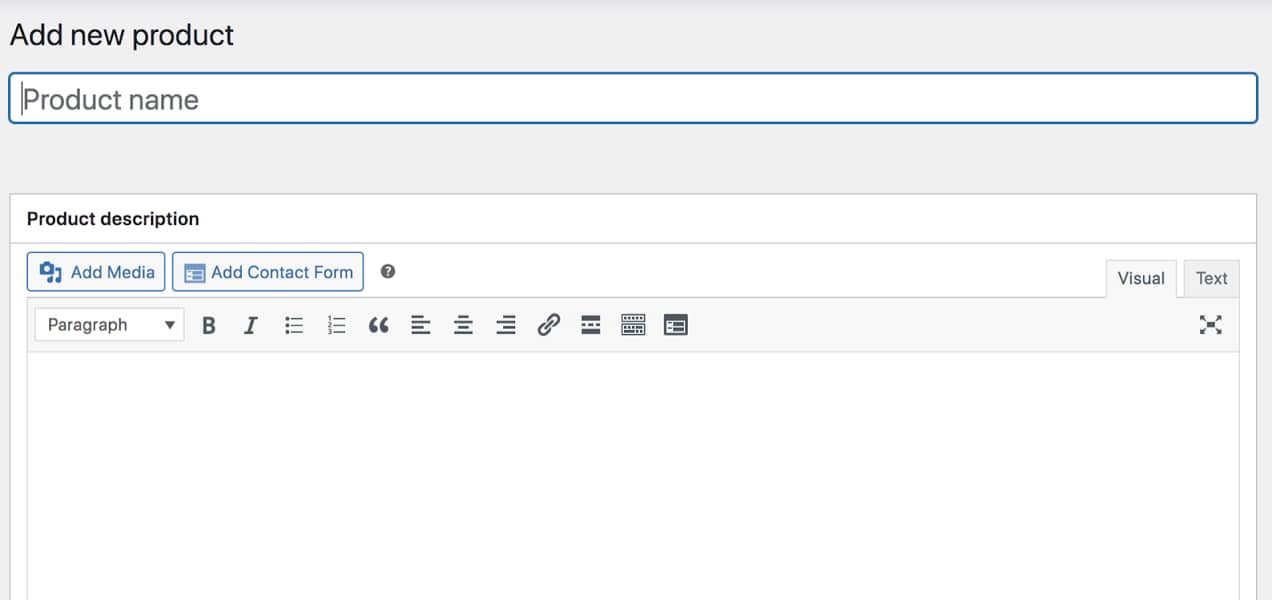
In the Product Data box, you can set all the item details, like product type, price, inventory levels, and shipping information. You can also add variations, which are options that customers can choose from, like size and color. And if you sell digital items or services, you can opt to make the product “virtual” or “downloadable.”
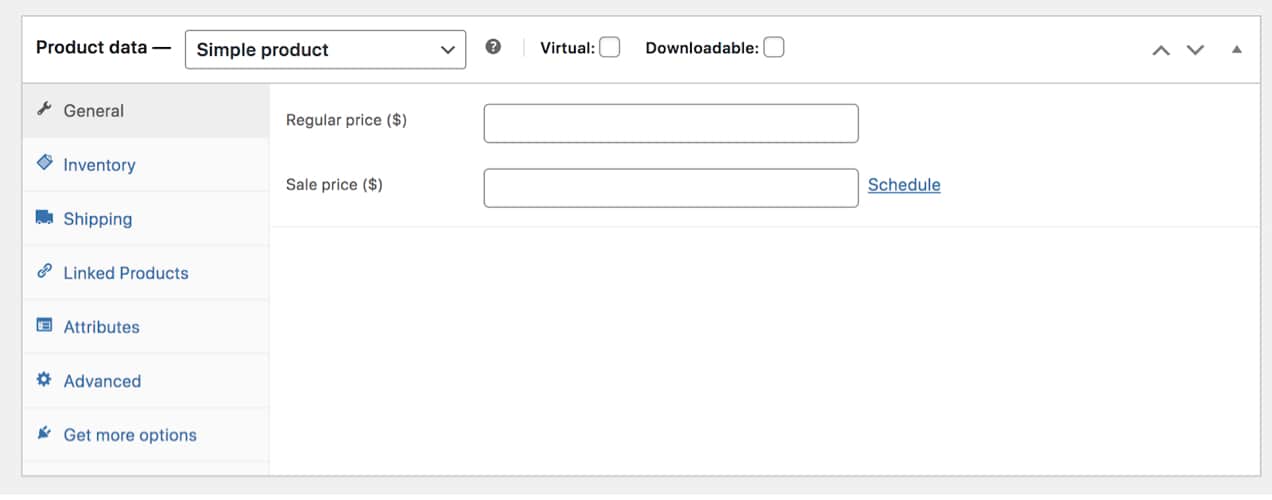
Finally, on the right-hand side, you can add your images, categories, and tags.

Learn more about adding products in WooCommerce.
Add extra functionality
If there’s any additional functionality or special product types you need, now’s the time to add it using extensions. Here are just a few examples of tasks you might want to achieve:
- Sell subscriptions online, offer memberships, or accept bookings.
- Offer add-ons like gift wrapping or personalization.
- Create a loyalty program with points and rewards.
- Sell product bundles and kits.
- Accept deposits for your items.
Each extension comes with detailed documentation that walks you through setup and configuration.
Set up payment options
There are two primary questions to answer with regard to accepting payments for an online purchase.
What is your online pricing strategy?
Online, you have more pricing options than in your physical store. In addition to simply accepting one-time payments on the spot, you can more easily offer:
- Subscription plans
- Installment plans
- Product bundles
For service businesses, accepting point of sale payments using a card reader makes the process fast and simple for customers, and much easier for you as well. WooPayments is the simplest tool for setting this up so it integrates with your WooCommerce store.
If you want to sell products or services priced over a hundred dollars, you may want to consider offering installment plans. The Buy Now Pay Later option makes purchasing higher-priced items easier for customers. You can make this available using extensions such as Affirm Payments, which lets the customer pay in four installments.
You can sell products online in bulk as a way to increase average order size while giving customers a better overall deal. The Product Bundles extension makes this easy to do on your ecommerce site, something that is much harder to do in a brick and mortar store.
How will your online store accept and process payments?
Understanding payments is a crucial part of learning how to sell online. A payment processor keeps the online payment process secure, while making it easy for online shoppers to pay. You have several ways to do this:
Debit and credit cards
This is the most common method for paying online, and customers pretty much expect it.
To process payments, you need to use a service called a “payment gateway”, which includes providers like PayPal, Stripe, and Square. You can learn more about how these payment processing gateways work and considerations for choosing the best one in our article, How to Choose a Payment Gateway.
Mobile wallets
You can also accept payment from services such as Amazon Pay and Apple Pay, and peer-to-peer tools like Venmo and Zelle, which function more like having cash on hand.
These are fast ways to pay online, and for customers who prefer to shop and pay in just a few clicks, you’ll increase conversions by offering these options.
Some of this again depends on your target market. Choose the payment methods the majority of your customers want to use first, and add others later.
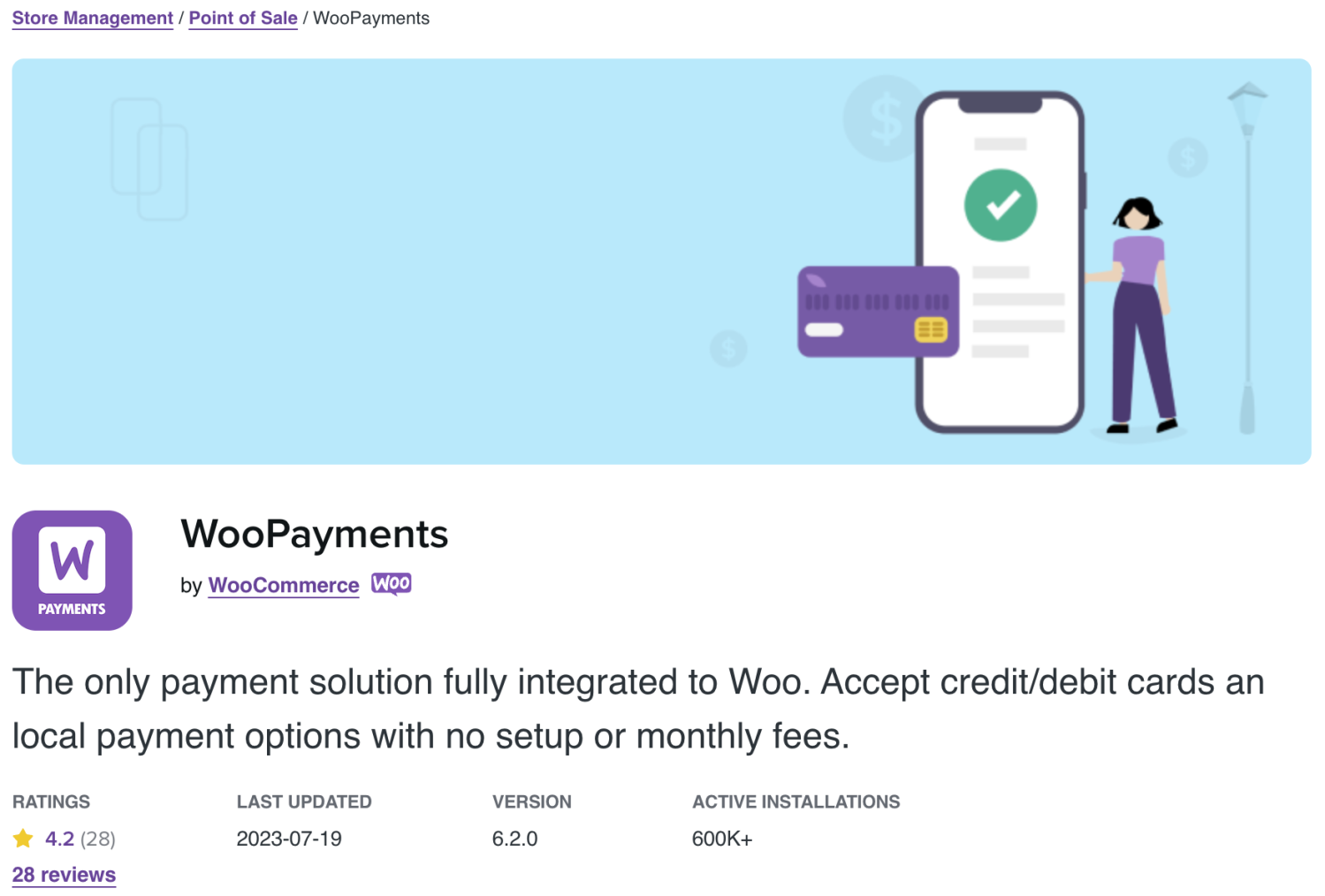
An excellent starting point is WooPayments. This free tool allows you to accept credit and debit cards alongside digital wallets, in a variety of currencies, and manage everything from your WordPress dashboard. You can even set it up to take payments in person, so it’s a strong option if you want to integrate your online and offline transactions.
Choose shipping methods
Despite the widespread customer expectation for free shipping, somebody has to pay to deliver products to customers’ homes. As an online merchant, you have a few ways to go about this.
First, you can raise your online prices to build in shipping costs, and then comfortably offer free shipping. Or, you can use other shipping strategies like flat rates or table rates so you can keep your prices lower. And because you have a physical store, you can allow customers to save on shipping by picking up their purchases in your store.
Here’s a complete discussion of shipping methods and fulfillment options.
How to ship
As for the actual process of shipping, you must create a packaging system and find a way to print labels.
If you’re a US-based business, the free WooCommerce Shipping extension makes it easy to print labels for USPS and DHL, and even includes a discount.
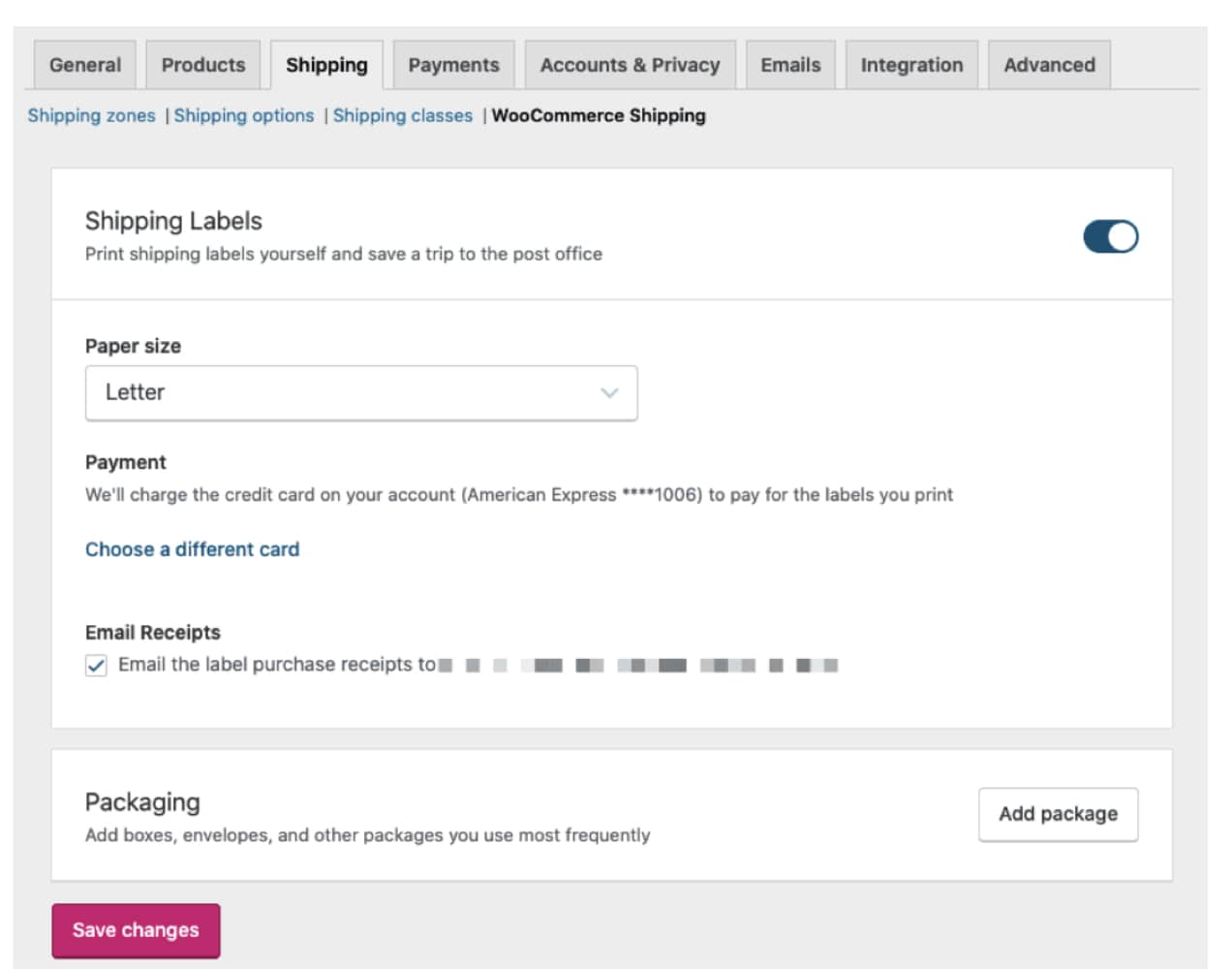
For other businesses, or US stores wanting more shipping options, WooCommerce has a number of other shipping extensions that use carriers such as UPS and FedEx, alongside lots for international options.
For packaging, you’ll need to consider ways to keep your products intact and secure during transit. You also need someone to actually put the items in the box or envelope, seal it, and affix the label. You’ll need a place to store your packaging materials.
And if you want your customers to feel excited and well-served when they open your packages, spend additional time coming up with ways to deliver a unique unboxing experience. Again, here’s a complete discussion about shipping methods and everything that goes into creating shipping systems.
And if you’re using WooCommerce, use this guide to set up shipping processes as you learn how to sell online.
Set up taxes
Collecting sales tax and VAT on ecommerce platforms has become much more complicated in recent years, as more governments have begun mandating sales tax for online businesses.
Each state, province, and country can have different procedures and requirements in place. The rules you must follow are based on the location of your business or the areas you serve, which can be hard to define if your employees are spread out across multiple cities or states.
But the right extensions again make things easier. You can use software to automatically calculate tax rates based on all the various factors, and you’ll save both time and stress.
WooCommerce is working to make it easier for businesses to incorporate taxes into their online sales. You can set up your store to collect taxes based on location and other factors, and choose to display your prices with or without taxes. Here’s a guide for setting up taxes in WooCommerce.
Sync your inventory
As mentioned earlier, once your physical store begins to sell online, you’ll need to make sure your inventory syncs between your online and offline storefronts and databases.
When customers order something online, they either need to pick it up in person or have it delivered. That means that item is no longer available to be put out in your retail section. So you need systems for managing and storing inventory that incorporate offline and online purchases.
The Scanventory extension makes syncing your inventory across each sales channel easier and less costly than other ways to manage inventory.
Implement new customer service practices
Once you begin to sell online, your customer service strategy will need to adjust to the fact that some customers are ordering in person, others by phone, and others online. You need to develop what’s called an omnichannel customer service strategy.
With an online business, how will customers engage with you? Will they send emails? Fill out a contact form? Send texts? Use social media? Will you offer a live chat option?
Some of these services can be automated to some degree, but you’ll need at least one person who responds to inquiries through whichever channels you make available. There’s nothing worse for a customer to send an email, text, or instant message and receive no reply. That’s almost guaranteed to lead to a lost sale.
That’s why, though you may like the idea of just using everything and letting customers contact you however they want, remember that someone has to be monitoring each communication channel and be ready to respond in a timely manner. So, only offer the communication channels you can effectively manage.
Another aspect of omnichannel customer service is the ability to work with customers who want to pay online and pick up in person. Or buy in person and have it shipped to their out of town address. Can you handle that?
WooPayments, also mentioned earlier, ensures you can accept payments in-person that will sync with online orders.
Secure and optimize your store
Security is especially important for online stores, which collect customer information like addresses, phone numbers, and credit card data. And while WordPress and WooCommerce are secure tools, they can fall victim to hacks, just like other ecommerce platforms.
Here are some security measures to put in place:
- Use strong passwords and assign the correct user roles
- Take regular backups and store them separately from your website
- Regularly scan for malware
- Monitor the activity that occurs on your website
- Install an SSL certificate to protect customer transactions
- Prevent comment and contact form spam
- Keep WordPress, themes, and plugins up to date
- Install a web application firewall (WAF)
You can learn more about all of these (and more!) in our guide to WooCommerce security.
Finally, take the time to work on the speed of your website. If your ecommerce store runs too slowly, it might drive away visitors, who won’t be willing to wait. Thankfully, speed optimization doesn’t have to be complicated. Learn ten ways to speed up your online store.
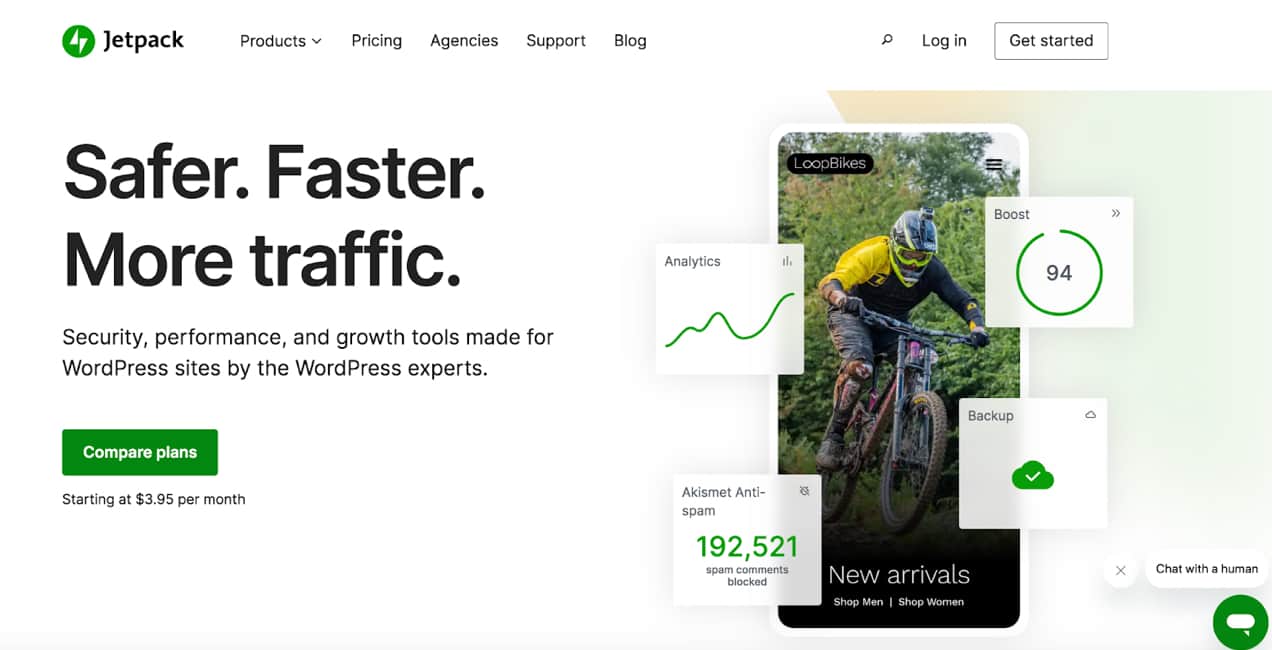
Jetpack can take care of the majority of the security and speed optimization tasks mentioned here. From real-time backups that save every single thing that happens on your store to malware scanning, a firewall, and simple speed tools, you’ll be taken care of. See all the features and available plans.
Launch your store!
It takes some work to set up an ecommerce business, but if you want to sell online and realize all the benefits of expanding your business to the digital marketplace, just start going through the tasks in this article one at a time. You will eventually have a functioning, revenue-generating ecommerce store to supplement your brick and mortar retail store or service business.
Marketing strategies for your online store
↑ Back to topOnce your online store is up, you’ll need to start drawing traffic to it. Shoppers are out there, and you want them to find you online and make purchases using the systems and processes that you’ve worked hard to set up.
You could break marketing, broadly speaking, into two categories:
- Attracting new customers
- Retaining existing customers
Your existing customers are the easiest ones to sell products to because they’re already familiar with you. If they had a good first experience, the barrier to selling online to them again is much lower than for someone who has never bought from your online store.
Marketing to existing customers
Now that you know how to sell online, we’ll explore explore two primary ways to market to existing customers and generate repeat business — email and social media.
Email marketing
Email is one of the lowest cost forms of marketing, and one of the most effective.
Once you have customers in your email list, you can send offers, deals, updates, announcements, and so much more. You can send helpful content about products and common problems your customers face.
Not every email should be selling something. Look for opportunities to include a mix of helpful content, insider scoops, free offers, and things like videos, interviews, and topics of interest to your customers.
With email, you can present new opportunities to engage and buy, without having to rely on them to find your online store again.
Here are a few tips as you implement your email marketing strategy:
Capture emails any way you can
You should include an email opt-in form right on the homepage of your ecommerce store. But you may also want a separate page promoting your email list so you can link to it, and expand on the benefits to customers.
You can also allow customers to opt in on the checkout page and on the thank you page, which is your last and best opportunity to capture a new buyer’s email subscription before they disappear.
Send abandoned cart emails
Abandoned cart emails are simple, automated reminders for customers who place items in an online shopping cart but, for whatever reason, don’t complete the purchase. This simple email will bring in revenue you would have lost otherwise, because some people just forget or need a gentle reminder.
Send welcome emails
New subscribers should receive an automated welcome email that reinforces their decision to subscribe to your list. If they were supposed to receive a special offer, that should be part of the welcome email. If you want to use a welcome series with more than one email, you can do even more to make new subscribers feel excited to be part of your world.
Again, don’t make this all about selling. Inject your welcome series with some fun. Show some personality. Be memorable. Make a good impression.
Your welcome email should also include some practical details about what to expect, and make it clear they can unsubscribe at any time.
Segment your list as it grows
As your email list grows, begin to categorize your subscribers so you can send more relevant marketing. If you sell clothing, create segments for people with kids, different ages, or whatever other categories are appropriate for your products.
You can segment by:
- Interests and product categories
- Purchase history
- Purchase frequency
- Demographics
- Many other categories
How do you do all this?
If you’re looking for the right tool to power your efforts, you can’t go wrong with Klaviyo. It integrates beautifully with WooCommerce and allows you to take care of all your email and SMS marketing in one place. It features advanced AI-powered subscriber segmentation that enables precise targeting based on customer behavior and purchase history for the most relevant and timely communication possible. Plus, there are seemingly-endless automation capabilities to help you recover abandoned carts, suggest upsells and product upgrades, and gather more five star reviews.

Use social media
There are tons of social media marketing platforms. If you’re not on any of them, don’t get overzealous and suddenly try to get on all of them. Start with one. Build a following. Learn how to use it effectively.
You can post every day or multiple times per day, and promote anything you want. Just like email, you can feature new products, videos of happy customers, special limited time deals, and so much more.
But remember that people will quickly lose interest in accounts that only sell, sell, sell. Think of social media like a party. You may talk about what you do for a living, but you also need to add value to conversations in other ways and take an interest in the people you’re talking to.
Attracting new customers
Here are a few other ways to attract new potential customers to your own online store:
Search engine optimization (SEO)
When people search online, you want your site to show up for terms that relate to what you offer. These are known as keywords, and you can research the best ones to use and work towards having your site rank in the search results.
This is a big topic, and doing it right takes time. However, it’s absolutely worth the effort. Use this beginner’s guide to ecommerce SEO to get started.
Online ads
The most prolific type of online ads show up at the top of search results. It’s like skipping the line for SEO. You can get your site listed near the top with something like Google Ads, but you’ll pay a fee for every click that results.
You can also pay for display ads, which are graphics that show up on other websites and platforms. You can target these based on the topics of sites, the specific websites themselves, or entire audiences.
And you can pay for ads on social media sites to increase your exposure there.
Most online ads follow the pay-per-click model (PPC), meaning that you only pay when someone clicks on your ad. That doesn’t mean you make a sale though, so you need to be sure the pages on your site that the ad links to are optimized for performance and conversions.
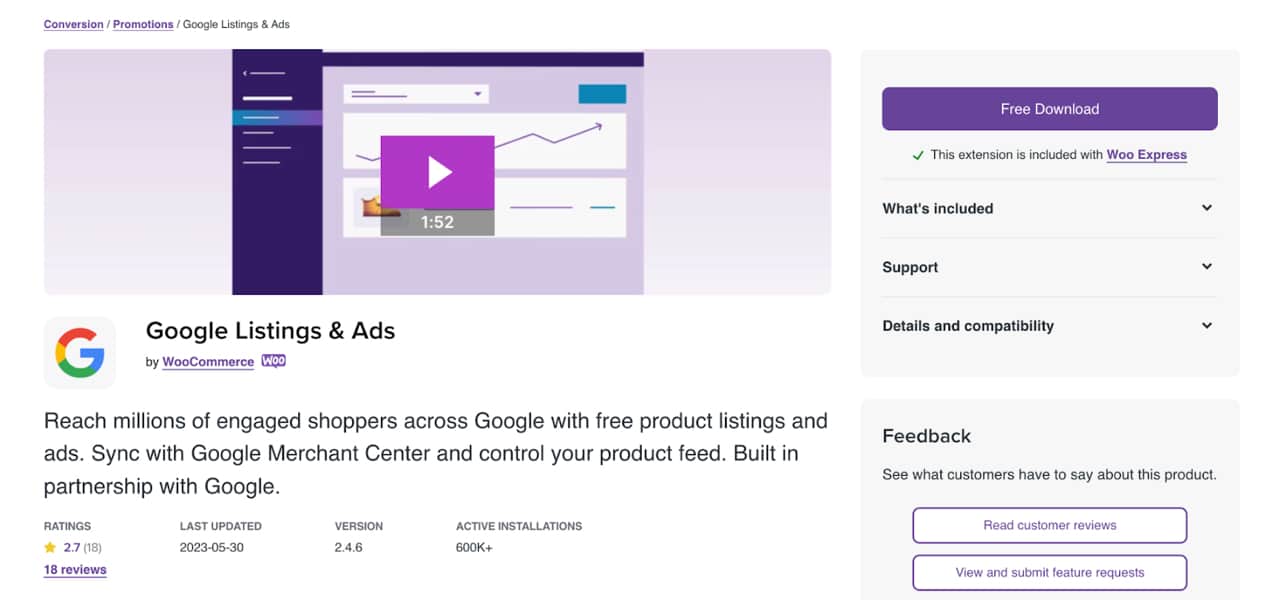
Google Ads is one of the most well-known online advertising platforms for selling online, and WooCommerce stores have a great tool at their disposal. The Google Listings & Ads extension integrates with your store to automatically add free product listings to Google Shopping and create and manage paid campaigns.
What’s next?
Expanding your existing business to sell products online is worth your time and effort because of the much higher revenue potential of reaching so many more people.
Work on this each week. Knock out one task at a time, or work on multiple tasks at once and you’ll get there even faster.
Eventually, you’ll have a revenue-generating, successful online store working in conjunction with your brick and mortar store.
What is the best site for selling online?
There are a variety of tools you can use to sell online, from marketplaces like Amazon and Etsy to proprietary platforms and open-source software like WooCommerce.
The best option for the majority of online stores is WooCommerce. It rises above the rest thanks to its flexibility, scalability, ease of use, cost, and the level of control you have over your store. Plus, there’s a great community that can help teach you how to sell online.
Want to see some ideas? Check out our list of 17 online business examples.
About






good article
Thanks for reading!